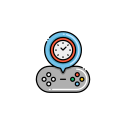

Not officially, but there are some github projects which help with it
I run 16 Bit Virtual Studios. You can find more reviews from me on YouTube youtube.com/@16bitvirtual or other social media @16bitvirtual, and we sell our 3D Printed stuff on 16bitstore.com


Not officially, but there are some github projects which help with it


Export it as a fusion file (*.f3d), you can reopen the file in Fusion and you won’t loose anything


There is cad plugins for blender. That said try FreeCAD again with the next major release. From the looks of FreeCAD daily, it’s really improved


I’ve personally switched over to FreeCAD, because of Autodesk signin policy (not this one, fusion kept signing me out forcing me to keep having to log back in). I am excitingly waiting for the next major FreeCAD release since the daily builds are looking extremely promising.


PixelJunk Monsters Ultimate, while I love the games music, it’s not necessary since it’s a tower defence game.


The last time I used bags the system lost its file system. So probably the other one. Exfat4 formatted


I’ve been at this for years, most of my designs are like your solid parts (Display Stands and DS Stylus). I’ve only recently tried experimenting with moving parts, and I’ve found using mixed mediums the best when 3D printing. i.e. using cloth or leather as the moving medium, with TPU or PETG for strength/flexibility.
As for what this is for. I’ve designed and made 3D Printable e-reader cases, which this link will show you the printable parts for, but I’d like to make a case for my iPad and other tablets, however I want to be able to prop it up and for it to be stable. This is designed with my cases in mind, and it has the clearance to lay flush with the back panel.
End goal is to have this embeded in the back so I can prop it up landscape, while I have another in the sleep cover so it can be propped up portrait, like an easel.


I could achieve the same effect by making the arms thicker. Though I am thinking of printing the screw caps in TPU to see if I can make it stiffer that way.
Trying to keep the parts the same as the main thing this belongs too. M2 threaded inserts and 5mm screws. So not a lot of flexibility when it comes to thickness. That said, as a MK2 I’d probably make it 2mm thick rather than 1.2mm since that’s my goto size for stiffness.
Right, lots of suggestions for Bambu and Prusa and rightfully so. But their prices are high and while they are worth it, they wouldn’t be what I’d suggest for a first time printer.
The Ender 3 is what I’d suggest, though not the V1. The S1 or the v3 and good starting points for being in budget and having some modern features.
This isn’t like the mid 2010’s where it was hit or miss and the printers will have a slight chance of burning your house down. Hictop anyone? But these days even a $200 printer is good enough to start printing.
That said software is going to be your biggest pain point.
For the slicer make sure its compatible with PrusaSlicr or Cura. Preferability the former. This makes the models to print, and some cheep third party slicers makes their own with questionable quality and support.
For modeling, you have some options. Blender if you are looking to design 3d shapes like clay. Fusion360 is a cheap and free (while limited) solution for parametric cad design. With TinkerCAD is a good in between. But like Photoshop is to gimp, Fusion 360 is to FreeCAD and it may be worth learning how FreeCAD works since its an extremely flexible tool.
TL:DR Ender 3 V3/S1, Prusa Slicer, Cura, Blender, TinkerCAD, Fusion360, FreeCAD and you should be too to start printing and making brackets.
For an alternative, when I was looking into server os’s, from what I can tell RHEL (Red Hat Enterprise Linux) is the go to since it’s stable. That said RHEL is not free, so what people use to do is get a free OS which is down stream to RHEL, that’s your Alma and Rocky Linux.
However back in 2023 IBM made some changes, and now Alma and Rocky had to rebase off of CentOS Stream which is what RHEL is based off of.
For all intent and purpose I’d recommend using Debain, but Alma and Rocky are alternatives you may want to look into. Personally using Alma and outside of the learning curve of using a RHEL based OS, it has been quite stable.


I presumed the issue was probably Flatpak Sandboxing (Steam is natively installed but my emulators were not). However Sunshine + Moonlight isn’t a viable alternative since I am trying to play on my TV with a Gamepad, and Moonlight wasn’t controller friendly on Android the last I checked.
That said if this was PC -> PC then yeah Sunshine + Moonlight is amazing.


Oh how I wish I had nemo on the iPad rather than apple’s own files app. The issue with SMB is getting files off of the iPad, this is a little easier for me since I can do so from my PC. And I’m not dealing with Apple’s files app silently crashing on me.


According to a brief Google search: Apple File Conduit (AFC)


In most non Apple Desktops, the most you’d get from connecting your iPad/iPhone is access to the photos and videos. You’d need to use iTunes to access the music or device documents.
On Macs it “Just works” and gives you full access to music and files.
While I can’t access my iPads videos and music in Mint. It’s nice to at least get me access to the documents, along side the camera videos and pictures. Not as good as I’d like it to be, but a lot better than what you can do with Windows… without installing iTunes.


I think how happy I am depends on what I am comparing it too.
Compared to Windows? I am very happy with Mint since thus far everything I need works, and I can even play some games.
Compared to my dream distro which doesn’t exist. Not as happy. Since it works, but asks me to use the terminal more than I want to.


I use Linux because of the 3D desktop cube. Who doesn’t love the cube!


Printed on a PrusaMK4, prusa sclicer is a good starting point, but also good filament helps.


Ditto!


It was on Humble Bundle, but I think it’s over now.
I agree, though Daily appears to be much better. For the sable release I see it like GIMP to Photoshop